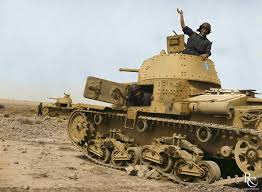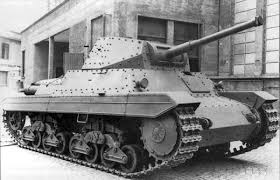Your basket is currently empty!
Introduction: A Struggle in the Sand
During World War II, North Africa became a critical battleground. While German forces under Erwin Rommel gained a reputation for tactical brilliance, their Italian allies often struggled, especially when it came to armored warfare. Italian tanks in Libya were plagued by mechanical issues, poor design, and unsuitability for the harsh desert environment. These problems significantly weakened the Axis position in North Africa. This article explores why Italian tanks frequently broke down, the consequences for the Axis campaign, and how these failures influenced the course of the war.
Italian Tanks in Libya: Overview
Italy deployed a variety of tanks in Libya, including the L3/35 tankette, the M11/39, and later the M13/40 medium tank. While numerically adequate, these vehicles were often technologically outdated by the time they arrived in the desert. Many lacked proper armor, had limited gun power, and were mechanically unreliable. Compared to British or German tanks, Italian models fared poorly in combat and maneuverability. Furthermore, Italy’s industrial base struggled to keep up with repair demands. The North African terrain only worsened these weaknesses.
Constant Mechanical Failures
One of the most pressing issues was frequent mechanical breakdowns. Italian tanks were not designed for harsh desert conditions, which included extreme heat, fine sand, and long travel distances. Sand frequently infiltrated engines, clogging air filters and jamming moving parts. Engines overheated quickly, transmissions wore down, and fuel efficiency was poor. Spare parts were limited, and logistics were disorganized. As a result, many tanks were abandoned by their own crews, even before engaging the enemy.
The Desert Was the Real Enemy

Desert warfare exposed design flaws that might have gone unnoticed in Europe. Tracks wore down quickly, dust compromised optics, and radiators failed in high temperatures. Moreover, Italy’s limited investment in tank recovery vehicles meant that broken-down tanks were often left behind. In many cases, entire units became immobilized due to mechanical failures, allowing Allied forces to counter-attack or capture vehicles intact. Italian commanders struggled to adapt, and morale among armored crews suffered significantly.
Strategic Consequences in North Africa
The inability to maintain armored strength gave Allied forces, especially the British Eighth Army, an edge in early campaigns like Operation Compass. British Matilda tanks outgunned and out-armored Italian counterparts. When German forces arrived with more reliable Panzer III and IV tanks, they temporarily shifted the balance. However, Italy’s poor armored performance had already contributed to early defeats and damaged Axis credibility in the region. The lack of dependable tanks forced greater reliance on German support, stretching the Wehrmacht’s supply lines.
Long-Term Impact on Italian Military Reputation
The failures of Italian armor in Libya became symbolic of broader problems in the Italian military during WWII—underfunding, weak logistics, and outdated tactics. Even after upgrades to tank designs, the stigma of desert failures persisted. Military historians often cite Libya as a case study in how terrain, technology, and poor planning can combine to undermine a fighting force. It also illustrates the growing importance of mechanical reliability in modern warfare.
Conclusion: Lessons from the Sand
The Italian tank experience in Libya teaches us that armored vehicles must be matched to the environment they fight in. While bravery was never lacking among Italian troops, their equipment frequently let them down. Mechanical failures, environmental stress, and poor logistics sealed the fate of many Italian armored units. Today, these lessons remain relevant for military planners and historians alike.
Explore more historical war machines on our War Machines site.

